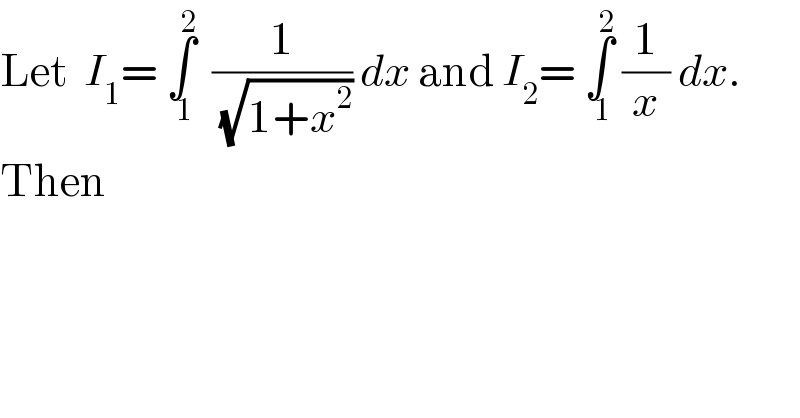
Question and Answers Forum
Question Number 44034 by Dilshad786 last updated on 20/Sep/18

Commented by maxmathsup by imad last updated on 20/Sep/18
![I_1 =[ln(x+(√(1+x^2 ))]_1 ^2 =ln(2+(√5))−ln(1+(√2)) and I_2 =[ln∣x∣]_1 ^2 =ln(2) .](Q44043.png)
| ||
Question and Answers Forum | ||
Question Number 44034 by Dilshad786 last updated on 20/Sep/18 | ||
 | ||
Commented by maxmathsup by imad last updated on 20/Sep/18 | ||
![I_1 =[ln(x+(√(1+x^2 ))]_1 ^2 =ln(2+(√5))−ln(1+(√2)) and I_2 =[ln∣x∣]_1 ^2 =ln(2) .](Q44043.png) | ||